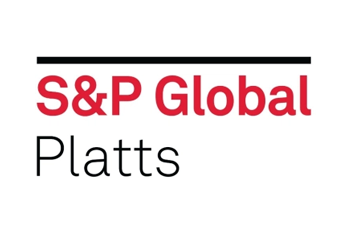IMO Bunker Spec Change Will Reduce Asian Distillate Surplus
 Asian oil demand growth is expected to be robust and average ~0.89 MMB/D per annum for 2018-19. China and India will continue to be the twin engines of Asian growth, driven by LPG, gasoline and gasoil/diesel. The IMO bunker spec change will help to reduce the distillate surplus in the region as gasoil/diesel demand picks up. China and India are well placed to benefit with their high level of coking/HCU capacity, which are geared for gasoil/diesel output. Asian refining fundamentals should continue to be moderately supportive for the rest of this year, with margins next year to be supported by the impending IMO 2020 bunker spec change. Overall, Singapore cracking margins are expected to stay healthy in 2018-19 before peaking in 2020.
Asian oil demand growth is expected to be robust and average ~0.89 MMB/D per annum for 2018-19. China and India will continue to be the twin engines of Asian growth, driven by LPG, gasoline and gasoil/diesel. The IMO bunker spec change will help to reduce the distillate surplus in the region as gasoil/diesel demand picks up. China and India are well placed to benefit with their high level of coking/HCU capacity, which are geared for gasoil/diesel output. Asian refining fundamentals should continue to be moderately supportive for the rest of this year, with margins next year to be supported by the impending IMO 2020 bunker spec change. Overall, Singapore cracking margins are expected to stay healthy in 2018-19 before peaking in 2020.
CA Carbon Prices Steady, with Widening Spreads; Compliance Surrender Looms
CCA prices posted a fifth consecutive month-on-month rise in Sep, with Oct pricing similar to Sep, and delivery spreads continuing to widen. Trading volumes and OI fell month-on-month in Sep. Players appear well prepared for Nov 1st compliance surrender, which will include retirements for 2016 EIM emissions. Offsets utilization will determine the bank carryover – and the massive Oct offset issuance comes just in time for compliance. 2017 covered cap and trade emissions data will be released after the surrender. Inflation to set the 2019 auction floor will be known the day of the Nov auction – with latest indicators coming in lower. CARB is working to finalize Cap and Trade amendments this year, and is still under pressure to address “overallocation” - absent action on this, the next few years will see market surplus continue to build, limiting pricing upside. Lt. Gov Gavin Newsom (D) looks to be well ahead in CA's gubernatorial election, while Prop 6 could affect transportation fuel demand. WA will vote on a carbon tax ballot initiative and both legislative and gubernatorial elections in OR are in play, with implications for that state's cap and trade and clean fuel efforts.
Surprisingly low U.S. inflation and unexpectedly weak Chinese vehicle sales
With the U.S. unemployment rate at a multi-decade low, concerns about possible economic overheating have moved to center stage. Inflation data for September, however, were benign. Looking at data by sector, there were no sharp pick-ups anywhere, and in addition, leading indicators of inflation did not flash warning signs. Cost indicators pertaining to the U.S. energy sector were also well behaved. In China, trade data for September surprised positively. However, vehicle sales turned weak, pointing to a toll trade-related stress has taken on consumer confidence.
Propane stocks build, ethane weakens on canceled exports
 US propane/propylene stocks rose by 1.5 million barrels during the week ended October 5, according to EIA data. Total US inventories now stand at 80.3 million barrels, just above the 80 million barrel threshold generally viewed as the target for the beginning of winter. The EIA reported exports of 666,000 b/d for the week, compared to Platts Analytics' estimate of 842,000 b/d based on ship tracking data. Winter demand typically begins influencing product supplied toward the end of October, and with production levels averaging nearly 14% higher than this time last year, inventories may continue to build through the end of the month. Front-month non-LST propane lost 7.375 cents/gal, or 7%, ending the week at 96.5 cents/gal.
US propane/propylene stocks rose by 1.5 million barrels during the week ended October 5, according to EIA data. Total US inventories now stand at 80.3 million barrels, just above the 80 million barrel threshold generally viewed as the target for the beginning of winter. The EIA reported exports of 666,000 b/d for the week, compared to Platts Analytics' estimate of 842,000 b/d based on ship tracking data. Winter demand typically begins influencing product supplied toward the end of October, and with production levels averaging nearly 14% higher than this time last year, inventories may continue to build through the end of the month. Front-month non-LST propane lost 7.375 cents/gal, or 7%, ending the week at 96.5 cents/gal.
Market sources have noted midstream selling this week as a factor in falling ethane prices, as well as lower export demand this month. Two ethane carriers, the JS Ineos Invention and the Navigator Eclipse, appear to be in alternate service, with sources pointing to poor ethane cracking margins as limiting imports. Data from the American Chemistry Council released Wednesday showed September polyethylene production fell to an eight-month low, suggesting lower operating rates in the sector. As a result, front-month non-LST ethane lost 7.25 cents/gal, or 14.7%, ending the week at 42 cents/gal, having gone as low as 38.75 cents/gal. However, the ethane price drop is expected to be short lived, as buying demand for petrochemicals may quickly respond to the lower price levels.
U.S. Ethanol Prices Rose Last Week
Ethanol prices in most of the U.S. climbed to a one-month high on Friday as production plunged due to scheduled fall maintenance. At a rally in Council Bluffs, Iowa tomorrow, President Trump is expected to direct the EPA to grant a 1 psi Reid vapor pressure waiver to E15 to allow it to be used year-round in 2001 model or newer standard cars. The petroleum industry will fight this move vigorously. The U.S. exported 109.9 million gallons of fuel grade ethanol in August, up from 95.7 million gallons in July. Ethanol production in Brazil in August jumped nearly 16% year-on-year. In Europe, RME prices soared again last week and are currently on a 10-session winning streak. Prices reached a four-year high $1076 per metric ton on Friday.
China Oil Market Forecast
Economic activity was mixed in August as better industrial output, retail spending offset weaker growth in fixed asset investment and trade. Crude runs came in at 11.88 million barrels per day (MMB/D) in August, up 285 thousand barrels per day (MB/D) year-on-year but lower than our expectations. Demand appeared to be met by a drawdown in product inventories rather than through higher refinery runs. Crude imports rebounded month on month to 9.06 MMB/D in August, in-line with our forecast. With lower than expected refinery runs, some of the inflows may have gone into storage although this cannot be seen from satellite data. Gasoline demand year-on-year growth continued slowing down in August on fewer passenger car sales while gasoil demand growth remained weak on less freight turnover and fewer diesel car sales. E10 gasoline plan turned into actions in Tianjin although uncertainty remains about nationwide use of E10 by 2020.
Now Back to Harvest, Hopefully
With the October WASDE in the books, attention should return to harvest progress but as snow and continuing wet conditions linger it will remain a long slog to the finish line for many. As commented on in our WASDE Preview, quantifying harvest loss, especially shatter loss in soybeans, is difficult even when it's dry making any sort of true assessment nearly impossible except to say that crops in Iowa, Minnesota, Nebraska, and Wisconsin that remain unharvested are certainly not getting any bigger. What can be measured is the historical significance of precipitation since September 1st. During that time the NC, NE, and EC Crop Districts of Iowa saw their heaviest accumulation of rainfall in 126 years. The other 6 Iowa Districts all ranked in the top four in the same period, while the 3 most southern Minnesota Districts, places that were flooded in the spring, also ranked high historically, as well as those southern Districts in Wisconsin.
US Gas Weekly Report
Since September 18 – the day Henry Hub cash and the NYMEX rally began – the CFTC's weekly Commitment of Traders data highlights an important swing in non-commercial positioning. Notably, outright long positions have increased by more than 18 thousand lots from Sept 18 to Oct 2, while outright short positions have decreased by roughly 30 thousand lots. These position changes have pushed the NYMEX/ICE futures long:short position ratio to 1.07, which is slightly higher than the 2018 average of 1.03. There were signs that suggested the recent rally was due for a breather. Not surprisingly, such price action has already begun to play out, with the November NYMEX contract off ~6% from its recent intraday high of ~$3.37/MMBtu realized October 9.
Additional EUA Price Gains in 2018 Possible on Tighter Supply, Competitive Coal
EU Carbon Allowance (EUA) prices recently moved lower alongside declines in gas prices (as well as more stable coal prices), and also due to warmer weather. However, there is support for higher EUA prices in the balance of 2018 and into 2019 on both demand- and supply-side. Gas prices remain far above year-ago levels, and EUA demand from coal-fired generation remains strong. The lack of German auction volumes after mid-November also supports EUA price gains. Additionally, the upcoming EU Council meeting on Oct 18th-19th will allow market participants an opportunity to assess the prospects of U.K. participation in the EU ETS next year, with implications for EUA prices.
U.S. ethanol production and stocks increased the week ending October 5
U.S. ethanol production rose by 25 MB/D last week to 1,040 MB/D, rebounding from a five-month low. Stocks built by 576 thousand barrels to a near-record 24.0 million barrels. Inventories increased in every region except the Midwest. Approximately 20.9 million gallons were imported into the West Coast, the highest weekly total reported since the final week of 2012. Ethanol-blended gasoline production declined by 43 MB/D to 9,038 MB/D due to lower overall gasoline output.
Known unknowns make GY-18 NCS supply difficult to anticipate
Our base case is for GY-18 NCS production to sit just below GY-17 (111.2bcm), as the start of production at of Aasta Hansteen (~4bcm in this gas year) will mitigate the loss of production on other fields. Although total output is expected stable, uncertainty remains, with Aasta Hansteen, Troll, oil field gas re-injections, as well as the impact of reduced drilling that could each impact GY-18 production in excess of +/- 1bcm; whilst with the possibility of a more comfortable gas balance y-o-y in Summer-19, demand for NCS gas is likely to be lower.
Despite Winter Risks, New French Hub May Mean Less LNG as Europe Debottlenecks
France is unique among LNG importing nations, in particular in Europe, with more than one local reference price – PEG Nord in the North and TRS in the South – however this is set to disappear next month. Debottlenecking in France will finally alleviate Southern France (TRS) from paying prices that are on average 18% higher in December or $1.36/MMBtu. At the same time, this will have significant impacts on trade flows around Western Europe, with potential knock on effects globally. In addition, it creates a new key benchmark for global trade – as France becomes a hub for LNG trade in the Atlantic and Mediterranean, with close ties to both Northern hubs and Southern hubs.
Brent/WTI Spread Widened in Sept on Increased Pressure at Cushing
The Canadian Syncrude and WCS differentials both weakened considerably in September. Midland discounts were not as deep on the expectation of flows beginning on the Sunrise pipeline. Inventories at Cushing saw a small draw during the month. The rail arb from the Bakken to the Atlantic Coast was advantaged during September, while the Gulf Coast was disadvantaged. U.S. exports rose significantly during the month after having fallen in August.
Stresses Modestly Elevated, but Contained
There was a sharp break in equity markets last week, but credit metrics held up better than would be expected given the correction. Equity volatility (VIX) rose sharply, but oil volatility (OVX) did not follow suite. Emerging market debt, high yield debt, and investment credit all held up well. Commodities fell back -0.75%, with energy lower by 2.8%. Many of the industrial metals held up well given the turbulence, while precious metals gained. The dollar softened slightly for the week. Implied inflation fell back while nominal interest rates eased off their recent highs.
Thermal stack profile, shaped by renewable volatility and strong energy complex, directionally bullish for German prices
German prices have recently seen a surge in volatility with renewable output (wind + solar), coupled with a strong energy complex, likely to be the primary reason for the rise. The consequences on the German thermal stack are notable. While in 2017 the mid-range of the stack was flatter than the low and high end, this year the slope is relatively constant throughout the range. This is directionally bullish for German prices and even a softening of fuel and carbon prices should bring limited changes to the profile rather than a return to the 2017 one.
Coal Prices Correct Lower Despite Looming Winter Demand
Seaborne coal prices corrected sharply lower last week, with Australian coal prices leading the way lower. 4Q18 FOB Newcastle prices dropped by over $6.00/mt week-on-week, while CIF ARA and FOB Richards Bay fell by $3.35/mt and $3.50/mt, respectively. While a considerable downshift in oil and natural gas prices no doubt weighed on coal prices, the recent contract settlement between Glencore and Tohoku Electric took some of the air out of the over-inflated 6,300 kcal/kg FOB Newcastle market. India's electricity demand surged by 5.4% year-on-year in September, on both structural demand growth and coal curtailments last year because of low stockpiles. While inventories remain above prior-year levels, they are still perilously low.
White House Directs EPA to Allow E15 Year-Round, Delighting the Biofuels Industry amid Petroleum Industry's Opposition
Last week, following a meeting at the White House, Senator Chuck Grassley announced that President Trump directed the EPA to promulgate a regulation removing restrictions on the use of E15 during summer months. A senior White House official indicated on Monday that Trump will also propose new rules for Renewable Identification Numbers (RINs), making the market more transparent. The highly anticipated announcement is welcome news for biofuel advocates and the agriculture industry. It is a near certainty that one or more petroleum groups will file a lawsuit opposing the policy and trying to prevent its implementation.
Weekly U.S. stock build reaches 11.3 MMB
Overall commercial stocks built by 11.29 MMB for the latest week, placing inventory at almost 33 MMB below the year ago level. More than half of the increase (almost 6 MMB) was in crude stocks, as anticipated. Crude stocks are currently 52 MMB lower than last season and are expected to continue to build next week. Yet, the build should not be large (~1.0 MMB), as USGC production has been significantly impacted by hurricane Michael. Cushing stocks grew by 2.36 MMB, slightly more than expected. This week, net flows in the region should decline, and some refinery units are expected to come back on line. The combine effect should soften the build at Cushing to 1.7 MMB, which remains quite large though and could put further pressure on WTI structure.
Global Equities Post a Broad Decline
Global equities were broadly lower by a global average of 4.3%. The U.S. market fell 4%, with the weakest sectors being materials, industrials, housing, and banking, all down near 6%. Internationally, all the tracking indices also lost ground, other than Latin America, which was higher by 2.8%, due to gains from Brazil and Argentina.
Another Record Low on Crude Stocks, Despite Much Lower Runs in Japan
Crude runs dropped sharply on the week, as evidence of planned and unplanned outages was strongly apparent. Despite the run decline, another drop in crude imports drew crude stocks 2.5 MMBbls and levels hit another record low. Finished product stocks declined 1.6 MMBbls and was notably driven by draws in gasoline and gasoil. Aggregate demand was modestly higher. Refinery margins have been softer but should find good support from lower runs and tightening stocks. Marketing margins remain off their peak levels.
The information above is part of S&P Global Platts Analytics weekly Energy Market Recap – which alerts readers to our current analysis of energy markets around the world as well as the key economic and political factors driving those markets. To read S&P Global Platts Market Recap first, subscribe here.
Click here for additional information on S&P Global Platts Analytics global energy commodity market research services.


